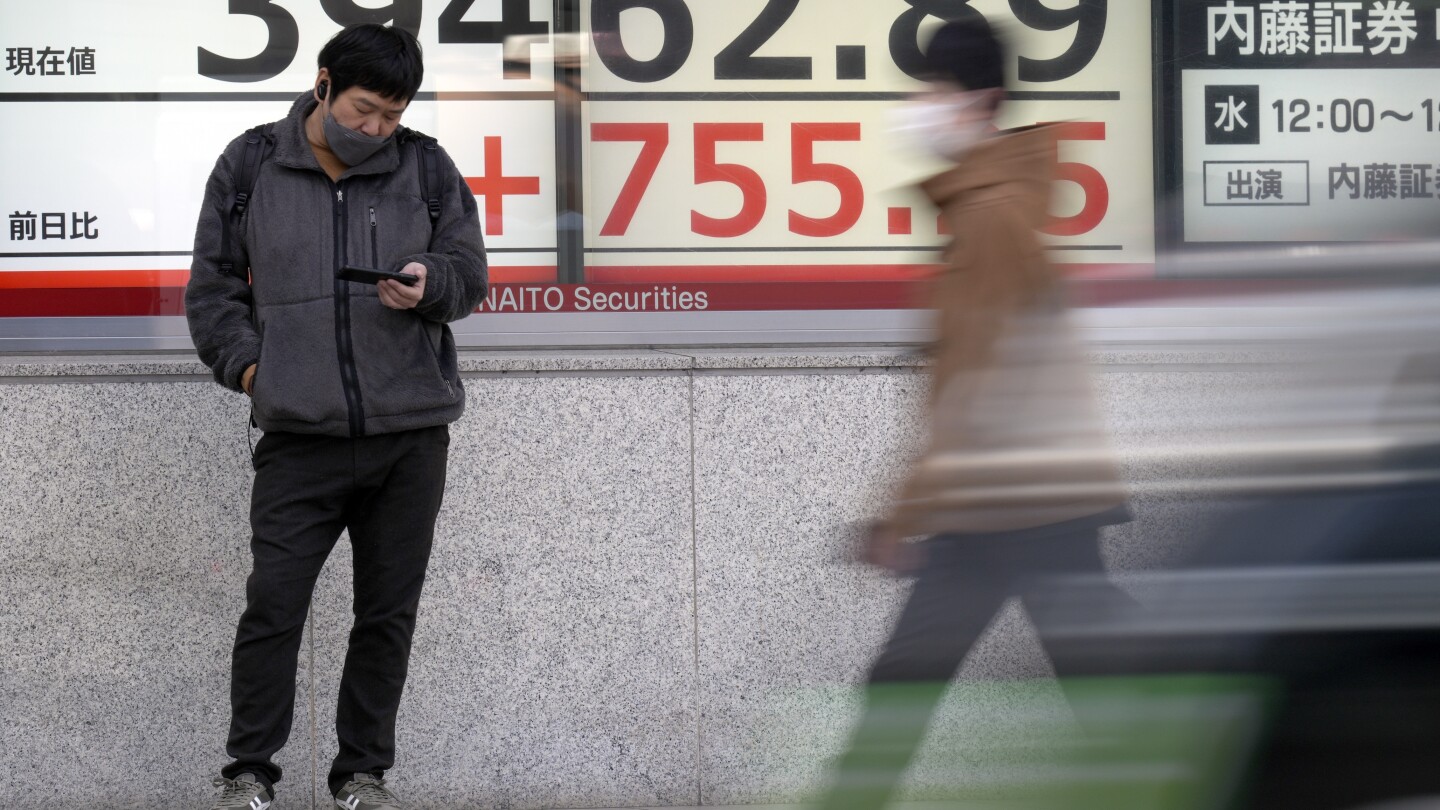HONG KONG (AP) — Asian stocks advanced Monday ahead of policy decisions this week by Japan’s central bank and the Federal Reserve.
Oil prices and U.S. futures rose.
Chinese data for January-February were mixed, with property investment falling while other indicators showed improvement.
In Tokyo, the Nikkei 225 index jumped 2.4% to 39,639.27. Markets are awaiting a decision by the Bank of Japan on Tuesday on whether to raise its benchmark interest rate for the first time in 17 years. Since 2016, the rate has remained at minus 0.1%.
Signs that employers plan solid wage hikes appear to have swayed the central bank toward finally easing away from the massive monetary easing employed over many years to try to spur growth in a country where the population is quickly falling and aging. The last rate hike was 17 years ago.
The Hang Seng in Hong Kong was flat at 16,720.40, and the Shanghai Composite index gained 0.5% to 3,069.67.
Elsewhere, Australia’s S&P/ASX 200 was unchanged at 7,670.60, while the Kospi in South Korea advanced 0.6%, to 2,681.26.
In India, the Sensex was unchanged and in Bangkok the SET was up 0.5%.
On Friday, Wall Street closed out its second straight losing week, giving back some of the gains that helped push the stock market to an all-time high earlier in the week.
The S&P 500 fell 0.6% to 5,117.09. The Dow Jones Industrial Average fell 0.5% to 38,714.77, while the Nasdaq composite ended 1% lower at 15,973.17.
Technology stocks retreated. Software maker Adobe slumped 13.7% after giving investors a weak revenue forecast. Microsoft fell 2.1% and Broadcom lost 2.1%.
Communication services stocks also helped pull the market lower. Meta Platforms fell 1.6% and Google parent Alphabet fell 1.3%.
The latest pullback for stocks came as traders reviewed several reports showing that inflation, though broadly cooling, remains stubborn.
A closely-watched report from the University of Michigan showed that consumer sentiment unexpectedly fell in March.
Inflation remains the big concern for Wall Street amid hopes for the Federal Reserve to start cutting interest rates. The Fed sharply raised interest rates starting in 2022 in an effort to tame inflation back to its 2% target. Inflation at the consumer level was as high as 9.1% in 2022.
A report on consumer prices last week showed inflation remains stubborn, ticking up to 3.2% in February from 3.1% in January. Another report on prices at the wholesale level also showed inflation remains hotter than Wall Street expected.
Other reports this week showed some softening in the economy, which bolstered hopes for a continued long-term easing of inflation.
A rally for stocks that started in October has essentially stalled this month as investors puzzle over the path ahead for inflation, the Fed and the economy.
Fed officials will give their latest forecasts for where they see interest rates heading this year on Wednesday, following their latest policy meeting. Traders are still leaning toward a rate cut in June, according to data from CME Group. The Fed’s main rate remains at its highest level since 2001.
In other trading, U.S. benchmark crude oil added 36 cents to $81.40 per barrel in electronic trading on the New York Mercantile Exchange. Brent crude, the international standard, gained 31 cents to $85.65 per barrel.
The U.S. dollar rose to 149.12 Japanese yen from 149.03 yen. The euro fell to $1.0887 from $1.0889.

